ADSactly Literature - Symbolism in poetic modernity
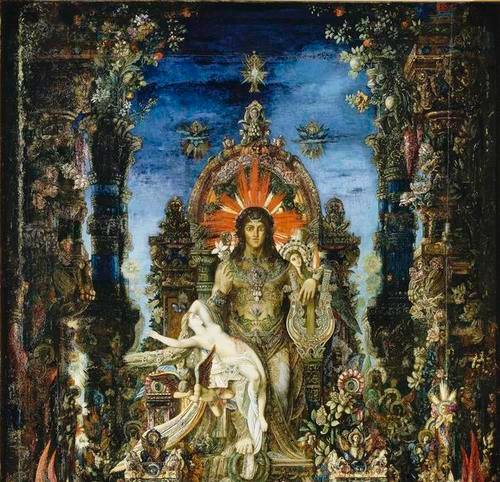
Symbolism in poetic modernity
The foundation of literary modernity, more specifically poetic, in Europe, which will radiate far beyond, has its most decisive manifestation in the movement known as Symbolism. Successive to Parnasianism (discussed here before: see), will play a decisive role in what will be modern poetry from then on.
It must be known that this literary current will also have its manifestation in music, sculpture and painting. In the latter, the work of Gustave Moreau, a painter I took to illustrate this post, stands out.
But before going on to explore its main aspects, let's make some preliminary considerations.
The term symbolism has certain disadvantages, since it is of imprecise significance, given that there are several conceptualizations of symbol, depending on the epochs and the thematic field. In an extended meaning, it should be assumed that all poetry is, in one way or another, symbolic, since it uses symbols to transmit sensations, moods or thoughts.
In a more reduced meaning, it can be conceived as a school, group or literary period developed in France between 1885 and 1895, approximately, whose members cultivated a symbolic language and postulated - in manifestos and magazines - specific aesthetic ideas that sustained that character and its mechanisms, ideas derived from the contributions of previous French writers.
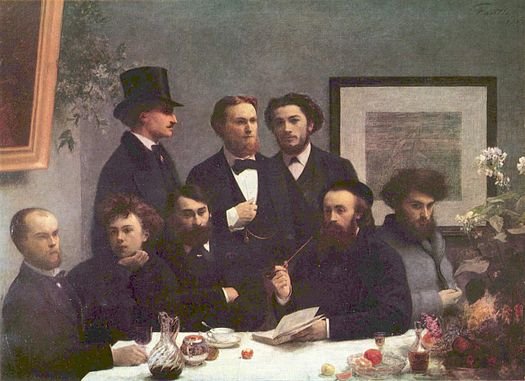
But one can agree on a broader and more appropriate meaning, which would understand Symbolism (thus with initial capital letters) as a much broader and deeper poetic movement than the strict Symbolist school (in this we assume the criterion of the researcher Luis Todó). It would go, then, from the crisis of Romanticism and would include Baudelaire, Verlaine, Mallarmé and Rimbaud (authors that I will deal with in particular in following posts) and would extend to great writers who dominated European poetry during the first two decades of the twentieth century, such as Valéry, Yeats, Rilke, Eliot, Juan Ramón Jiménez.
With this vision coincides the scholar C. M. Bowra, who includes in that symbolist tradition all those poets
which tried to manifest a supernatural experience in the language of visible things and in which almost every word is a symbol, since it is used not according to its current use, but by the association that evokes with a reality beyond the senses.
Thus, there are two important antecedents in French Romanticism. Victor Hugo, who had said in The Odes: "Under the real world, there is an ideal world that is resplendent in the eyes of those who are accustomed to see in things more than things". And Gérard de Nerval, who begins his Aurelia by declaring: "The dream is a second life (...); the world of the spirit opens up for us." In English literature, Poe can also be taken as a contemporary antecedent, when he identifies the defence of the faculty of fantasy, of a certain magical power of the word and of the "poem by itself", with which Baudelaire, his first translator into another language, will agree.
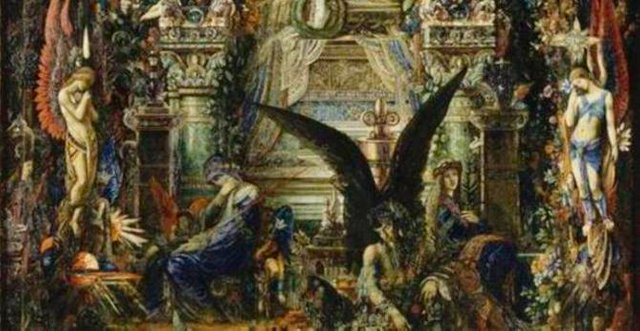
Complete Painting
It is no coincidence, then, that Baudelaire (1821-1867), even while participating in Parnasianism, is considered a key figure of Symbolism, or the main precursor of it. Baudelaire (to whom we will dedicate a separate post), with his book The Flowers of Evil (1857) and his Small Poems in Prose or Spleen of Paris (1862), will open the doors to true Symbolist and modern lyrics. Although it will be Mallarmé (of whom we will speak in his own post) who, taken as the later promoter of the Symbolist school, manages to bring together in a group that gathers several writers around him, where they would stand out: René Ghil, Gustave Kahn, Jules Laforgue, Paul Claudel, André Gide and Paul Valéry.
In 1886, Jean Moréas publishes the Symbolism Manifesto, in which ideas by Baudelaire and Mallarmé are followed. Let's quote a fragment:
We have already suggested the term Symbolism as being the only one capable of properly representing the current trend of the creative spirit in art.
Enemies of teaching, of declamation, of false sensibility, and of objective description, the Symbolist poets seek to clothe the Idea in a tangible form, which would nonetheless not be an end in itself, but which would remain subject to the Idea (…) for the essential characteristic of Symbolist art resides in never going as far as to reproduce the Idea in itself. So, in this art form, scenes of nature, human actions, all concrete phenomena, will not be depicted as such: they are tangible forms, whose purpose is to represent their concealed affinities with primordial Ideas.
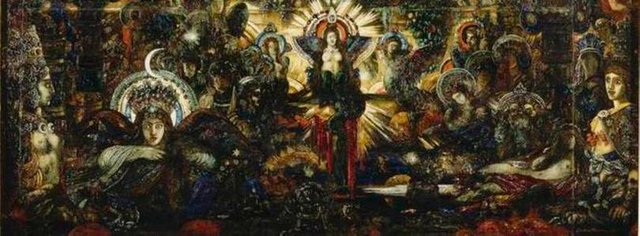
Complete Painting
Also René Ghil, member of the Symbolist school, based in Rimbaud (another author to whom we will dedicate a particular post), who had spoken of the color of the vowels, maintains the need to give poetry a power of sensory suggestion. From his Treaty of the Word we make this quotation:
The Poem, (...), becomes a true piece of suggestive music that is instrumental only: music of evocative words, of coloured images without prejudice to the Ideas (...).
Now, let's go on to synthesize the main features of Symbolism, and thus its influence on poetic modernity.
To this end, we must return to the conception of the symbol in the generation of the forerunners and continuers of Symbolist poetics. In this respect, the formulations of Mallarmé, who founded this poetics in a relevant way, stand out. Let's see a capital quotation:
The contemplation of objects, the images that soar from the reveries they have induced, constitute the song. (...) To name an object is to suppress three-quarters of the enjoyment of the poem, which derives from the pleasure of step-by-step discovery; to suggest, that is the dream. It is the perfect use of this mystery that constitutes the symbol: to evoke an object little by little, so as to bring to light a state of the soul or, inversely, to choose an object and bring out ofit a state of the soul through a series of unravelings.
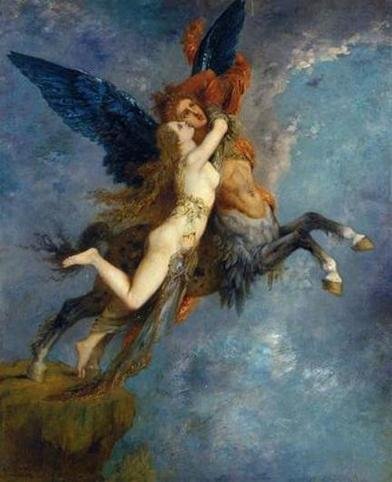
The symbol will be, then, that resource or procedure that acts by allusion, by suggestion, in an indirect way; not by designation of the object, but through a kind of rodeo to it. The symbolism of these writers will be proposed as an art of suggesting, and the symbols will have several values (polyvalent). Therefore, the reader's relationship with the poem will be given as an exercise in interpretation, not as an explanation or as a determination of a unique and logical meaning, since ambiguity and obliquity will be qualities proposed in his conception of poetry.
Symbolism arises, rather than to oppose Romanticism (there is a recovery of some aspects of its original manifestations, such as mysticism) and Parnasianism (with which it has important differences, but also affinities), as a rejection of realism and naturalism, above all because of the preponderance that rationalism has in these.
Hence, philosophically, a common trait of the Symbolist poets is not to accept the Positivism, both socially and artistically and morally. Positivism sought to explain and describe the world scientifically, while the Symbolist forerunners, above all, lean towards enigma and mystery, or, which is the same thing, the unknown and the irrational, including that which would later be known as "subconscious".
Baudelaire establishes an analogy between the sensible and suprasensible world, what is known as "correspondence". Verlaine conceives poetry as musicality, and as evocation of ambiguous moods. Rimbaud, being more daring, breaks with poetic forms
using free verse and poem in prose and emphasizes the irrational.

With regard to irrationalism, we must point out that the artistic practice of Symbolism corresponds to the spiritual crisis of the End of Century, and in this sense, agrees to a great extent with the decadent spirit of the end of the century, a philosophical, artistic and behavioural position that is attempted to be collected in the word "Decadentism" (of which I will speak in the next article).
The musical trait of poetry, both melodic and rhythmic, will be one of the great contributions of Symbolism. The autonomy and semantic plurality that they wanted for poetry reached in music an obligatory reference. Such musicality will be sought not so much with rhyme, but through sound, syntactic and cadenced resources in verse or prose, such as vowel or consonant timbres of words, internal accents, alliterations, reiterations of words, overlapping between verses, among others. Music occupied a central place in the interest of several of these artists; it is no coincidence that Richard Wagner, at that time, became almost an object of worship.
As far as the strictly formal aspect of writing is concerned, although it had appeared in Romanticism, it is with Baudelaire that the possibility of a lyric in prose is instituted, giving rise to the so-called "poem in prose", thus producing a transcendent liberation of poetic writing for modernity.
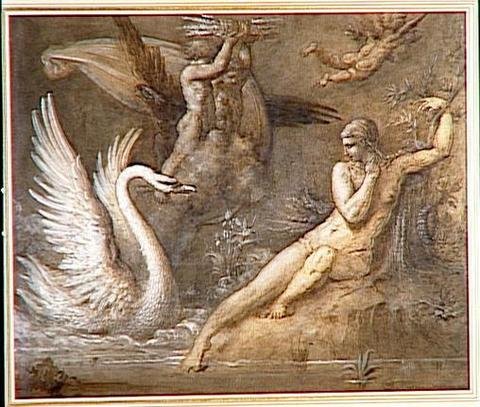
Although the poets prior to the Symbolist school respected the metric forms used before, as happened with Baudelaire, Verlaine and Mallarmé, later, some poets of the Symbolist group will introduce the free verse, that is to say, the private verse of the rhyme, of the regular cuts and of the regular number of syllables, but which maintains the internal rhythmic unity and between the verses. The first known free verses are those of Rimbaud, published in 1886, but had already been used by Walt Whitman in Herb Leaves (as we note in the post dedicated to him). Among his cultivators in Symbolism will be Jules Laforgue and Gustave Kahn, rather theoretical.
Faced with the loss of the "innocence" of the word, its character as a docile and useful instrument, its exhausted expressiveness and worn-out meanings, the conception of poetry is proposed as a laboratory of language in which the writer works to restore "a purer meaning to the words of the tribe", in Mallarmé's phrase, and against the formal neglect of some romantic manifestations.
Thus, poetry does not hope to explain the world, but to recreate it verbally, to create another world in and by the poetic word, which must be autonomous, neither servile nor utilitarian, completely individualizing and self-justified.
The protagonist will no longer be the Poet, who in Romantic times came to be conceived as a priest, magician, guide of humanity. The noun now is the language, the poem, the work. This connects him with the depersonalization of poetry that Parnasianism had proposed.
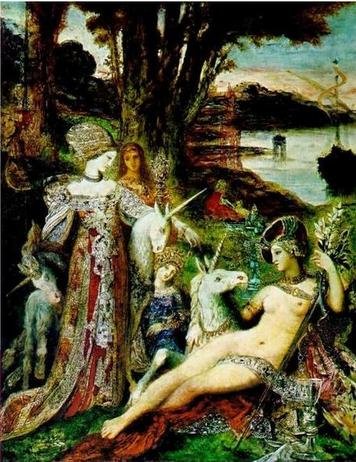
This implies a split between poetry and the public. As Valéry says, they renounced the "suffrage of number, they disdained the conquest of the great public"; far from any flattery or complacency, they wanted works that would create their audience. There is some isolation, some marginalization or social segregation. Hence the expression that Verlaine will coin: "cursed poets".
Finally, the vision will begin to question itself about what poetry is and should be, one of the enduring legacies of Symbolist poetics to the present day: "self-reflexivity".
Bibliographical references
Balakian, Anna (1969. The symbolist movement. Spain: Edit. Guadarrama.
Feria, Miguel Ángel (2015). Parnasianism and symbolism at the crossroads of
modernity. https://revistas.ucm.es/index.php/THEL/article/viewFile/47774/47212
Mallarmé, Stéphane (1987). Prosas. Madrid: Edit. Alfaguara.
Paz, Octavio (1985). The sons of the limo. Colombia: La Oveja Negra Publishing House.
Raymond, Marcel (1983). From Baudelaire to surrealism. Spain: Fondo de Cultura Económica.
Riquer, Martin de and Valverde, José M. (1979). History of Universal Literature (Volume III). Spain: Edit Planeta.
Todó, Lluís (1987). Symbolism. Spain: Edit. Montesinos.
https://en.wikipedia.org/wiki/Symbolism_(arts)
https://nicklouras.wordpress.com/2017/12/28/the-symbolist-manifesto/
http://www.studiocleo.com/librarie/mallarme/biography.html
Written by @josemalavem
Click on the coin to join our Discord Chat

Witness proposal is here:
Go To Steem Witness Page
In the bottom of the page type: adsactly-witness and press vote.

Use small letters and no "@" sign. Or, click here to vote directly!
Thank you!
Interesting as all literary or artistic movements were born as a response to other movements that may have been thought worn out or that did not capture the essence of art. All movement is founded on the bases (or ashes) of the previous movement.The poems of these writers have been recognized not only for their subject matter but also for the structure they used. I do not perceive, for example, poetry, especially far from the metaphor, the symbol, the image. As I read your post, I remembered Baudelaire's beautiful poem Correspondence:
Thank you for the gratifying post, @josemalavem
I appreciate your reading and comment, @nancybriti. That aspect you notice is precisely the basis of what Paz calls the "tradition of rupture", an absolutely modern feature in art: how a movement is born from breaking with a previous one(s), although in many cases they are reinterpretations or enrichments of those.
The poem that you quote from Baudelaire, "Correspondences", condenses part of his vision of the symbol, in that suggestive manifestation that is synaesthesia. Greetings.
educational writing. Inviting explores the flow of symbolism in literary works. A stream that is a reaction of naturalism and realism. the artists you put forward are actually also supporters of realism at first. but the development of the turmoil of their souls will produce works in different streams. Like an improvisation which then doesn't return to their origin. However, they accelerated and abandoned realism and gave birth to a stream of symbolism. An understanding that prioritizes the depth of meaning with symbols. They don't express vulgarity. for the layman it certainly takes more time to understand it, but there will be a touch of orchestral music when touching the plot.
And you describe it clearly and very well.
Thank you @josemalavem
Thank you @adsactly
Thank you steemit
Warm regard from Indonesia
Hello, @rokhani. Thank you for your reading and comment. A precision regarding one of your statements: the forerunners or fathers of Symbolism (Baudelaire, Verlaine, Mallarmé and Rimbaud) were not linked to realism, in any case yes, to some extent, with Parnasianism, especially Baudelaire. Greetings.
If you live, change ... "--- Bloody
Crater, Munir Chowdhury
My child should feed milk "-
Annadamangal poetry (Bharat Chandra
Rayagunaqar)
Goes dry '---- Mukundaram
The fate of the evil is unhealthy. '
------ Sheikh Fazlul Karim
Padma river "
-Manik Bandyopadhyay
Posted using Partiko Android
Really a fantastic arena of literature
Hi, @adsactly!
You just got a 0.37% upvote from SteemPlus!
To get higher upvotes, earn more SteemPlus Points (SPP). On your Steemit wallet, check your SPP balance and click on "How to earn SPP?" to find out all the ways to earn.
If you're not using SteemPlus yet, please check our last posts in here to see the many ways in which SteemPlus can improve your Steem experience on Steemit and Busy.
Dear adsactly:
We are SteemBet, the next generation STEEM based gaming platform. We are honored to invite you to join our first fantastic dice game, which is just the beginning of SteemBet game series. Our dividend system has now launched. The prize pool has already accumulated 2,000 STEEM and more than 60 players have participated in staking mining token SBT. A huge reward of 40,000 STEEM is awaiting! Join us NOW with other 500 STEEM users to loot HUGE dividend reward!!
SteemBet Team
Official Website
https://steem-bet.com
Discord Server
https://discord.gg/95cBN3W
Telegram Group
https://t.me/steembet
I find it very interesting